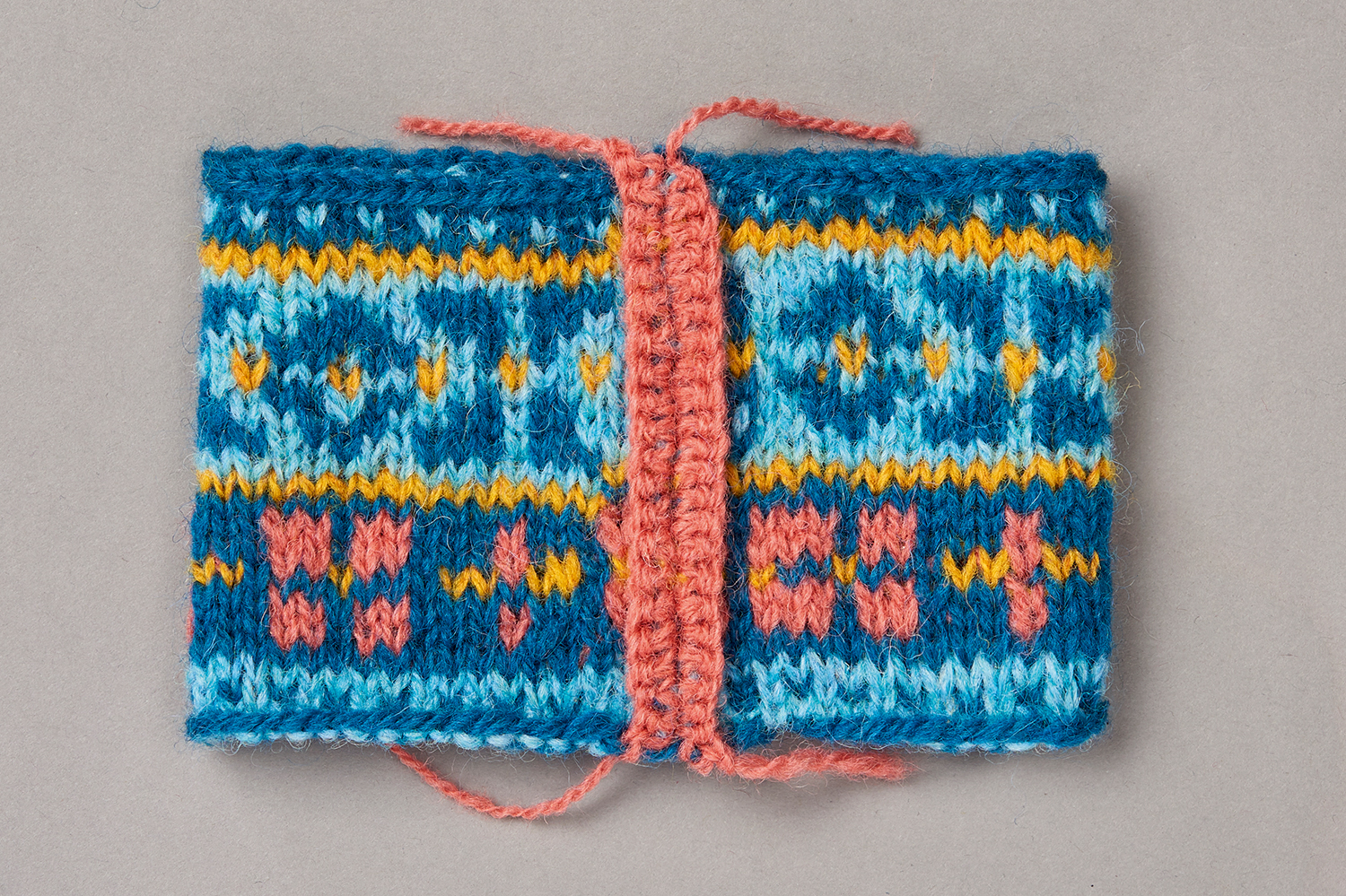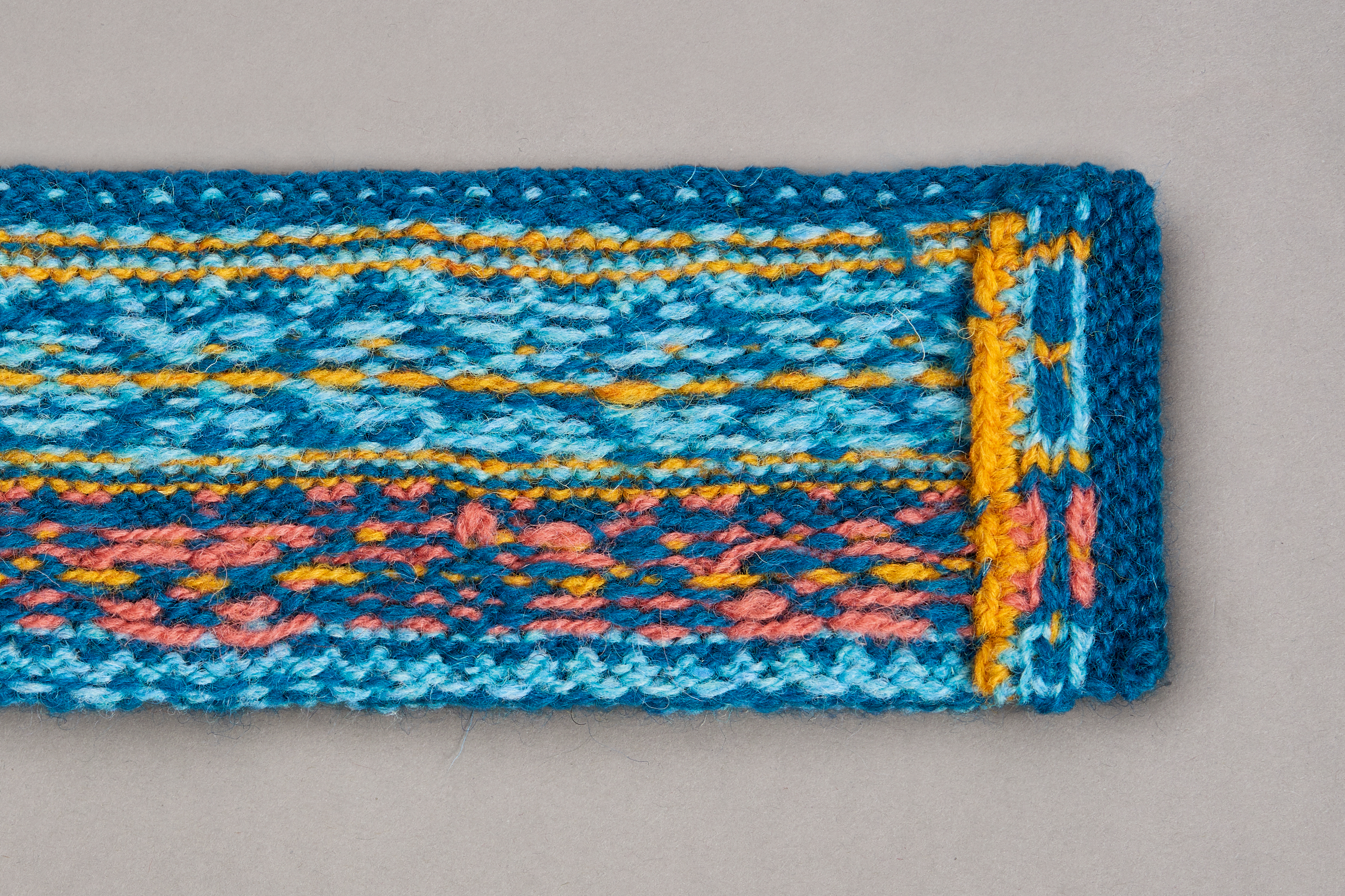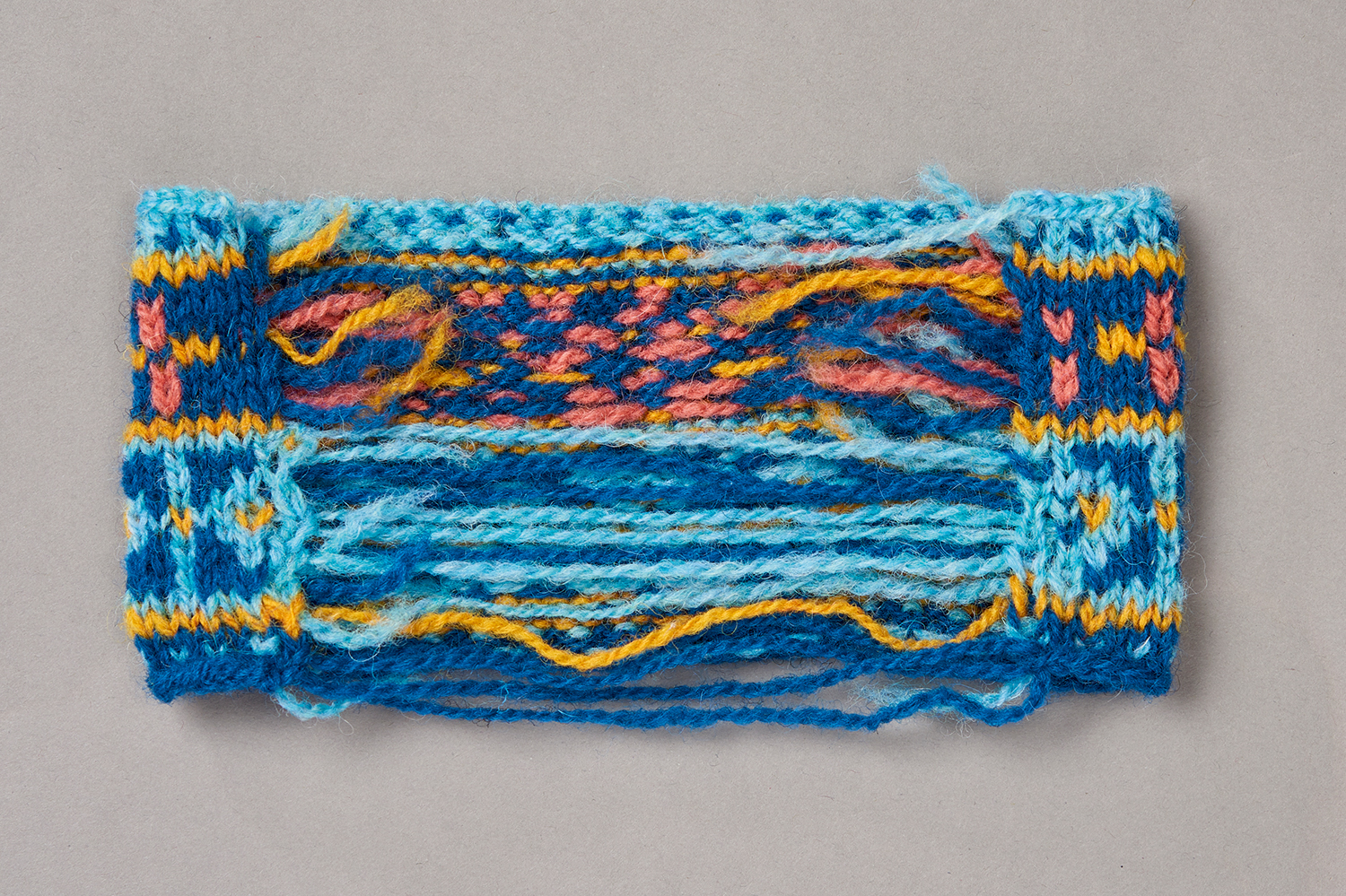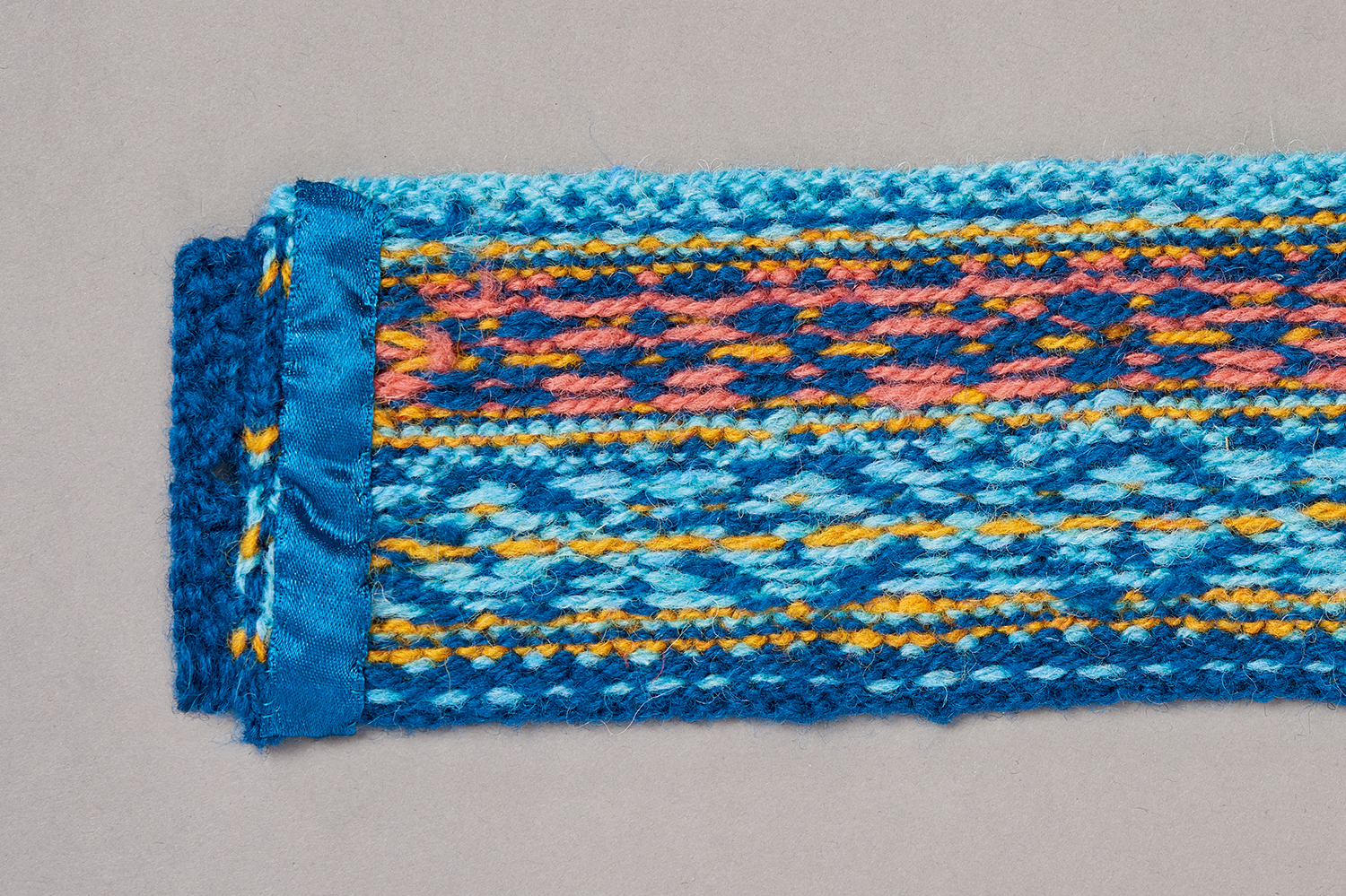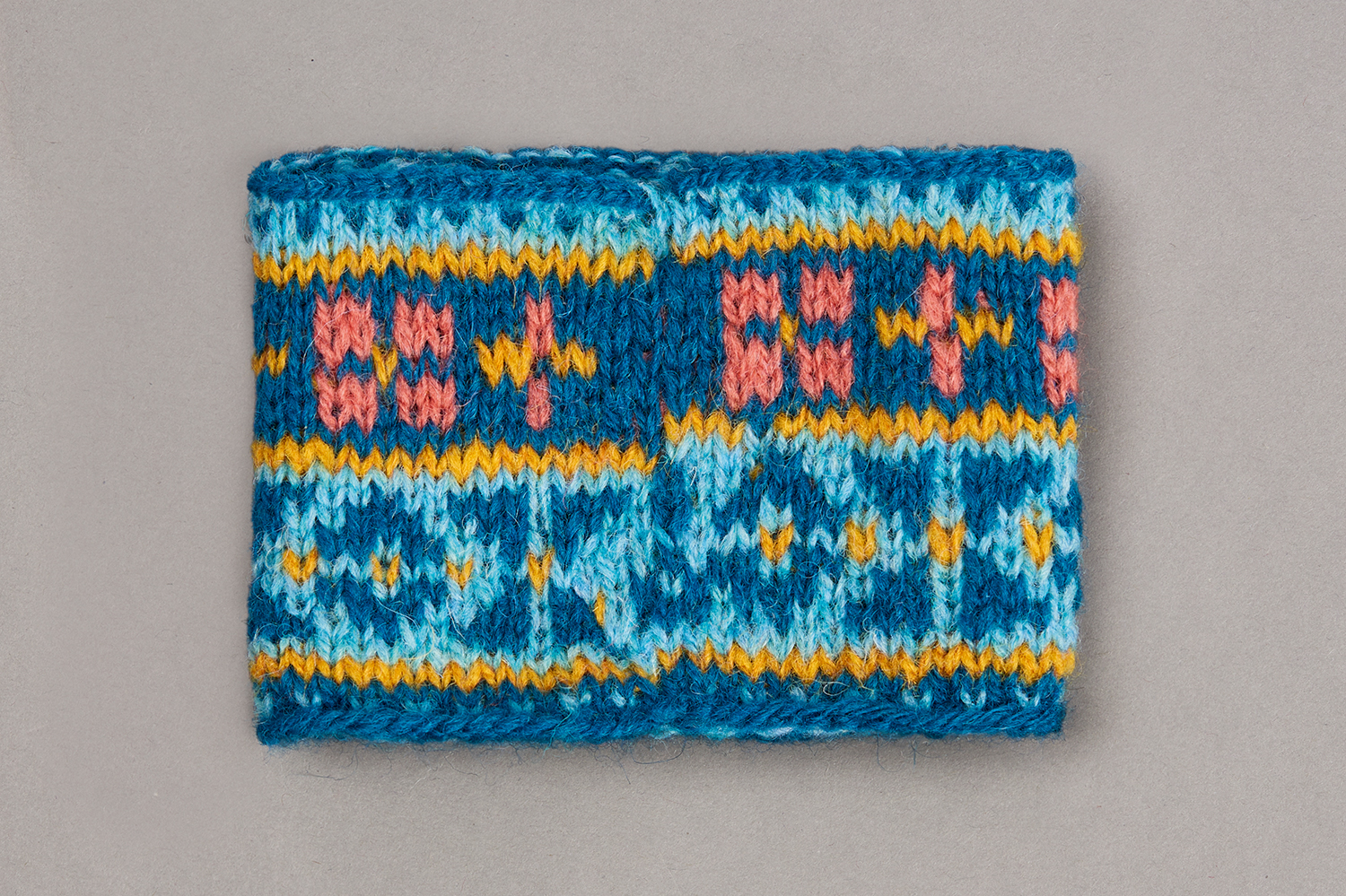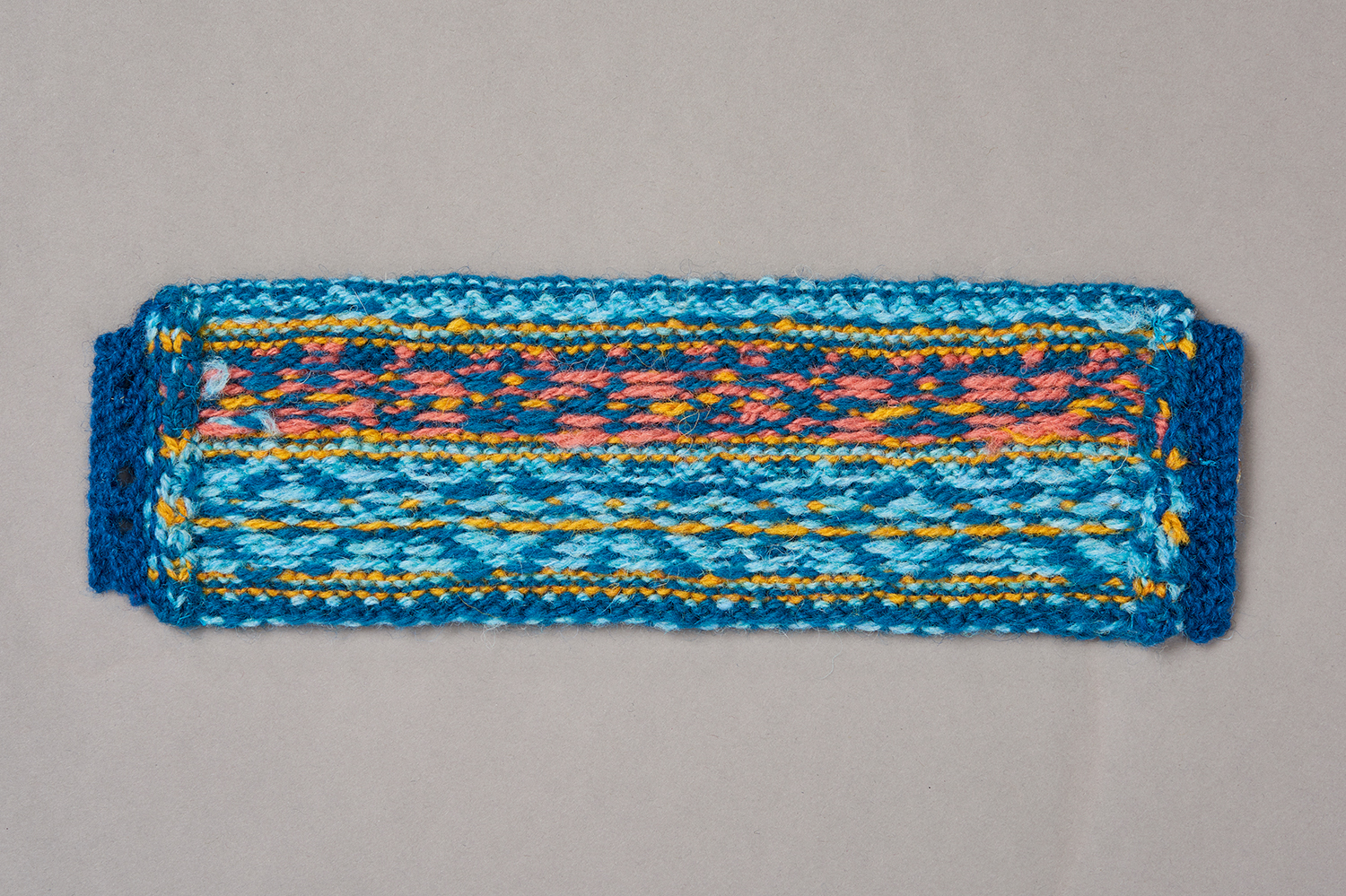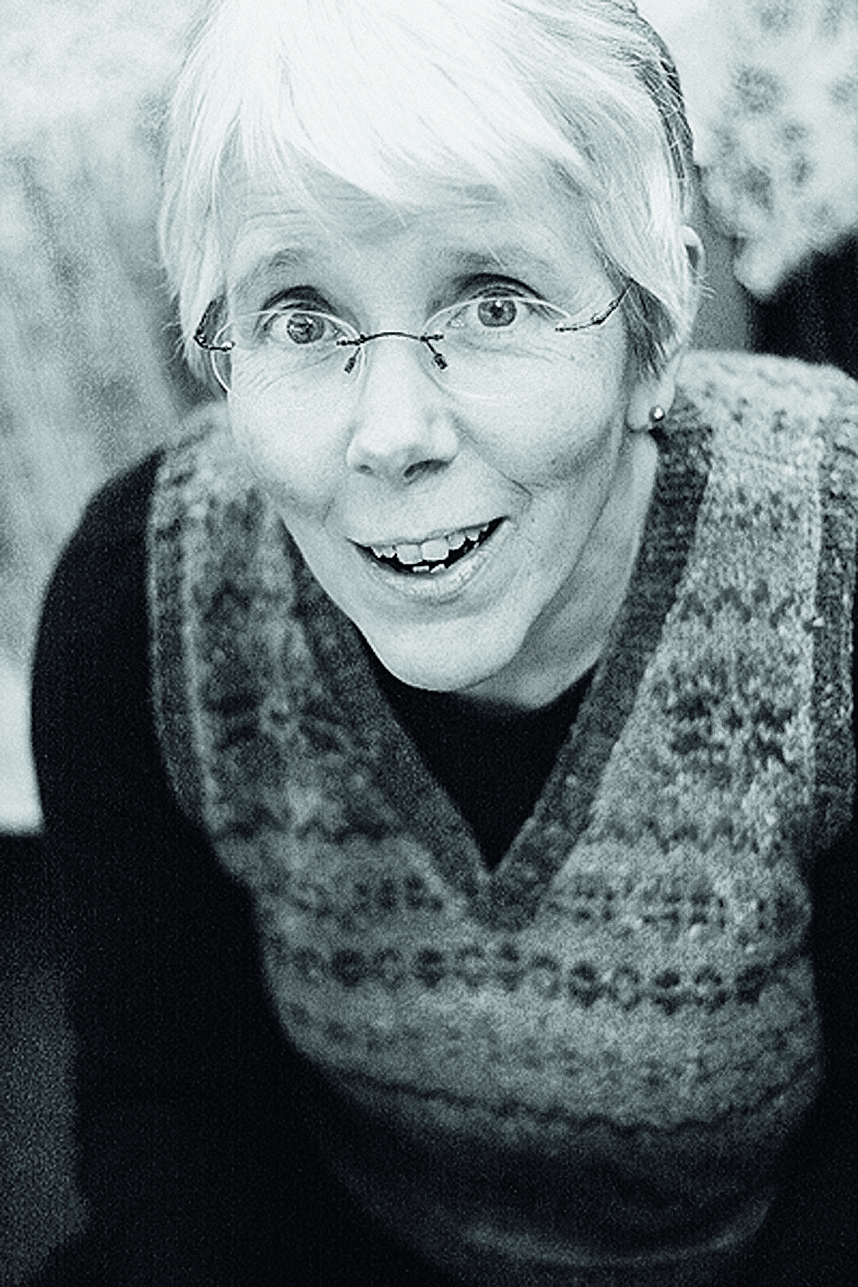The term ‘steek’ refers to a set of techniques used in preparation of cutting a knitted fabric. These techniques can involve knitting, sewing, knotting or crochet to reinforce the edge to be cut. Steeking is typically used in Fair Isle knitting, when the fabric has been worked in the round. Steeks are used to create openings in the tube of fabric, such as for armholes, necklines, or the front openings of cardigans and jackets.
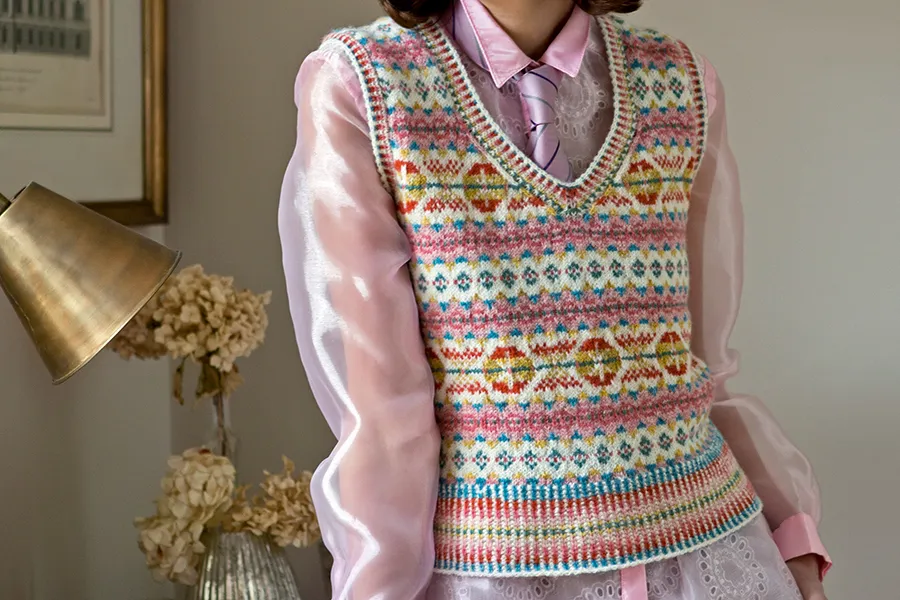
Fundamentals
A garment is knitted in the round to the shoulders, with extra columns of stitches (steeks) added at the front (for cardigans/jackets), at the neck, and at the armholes.
For cardigans, a steek can be introduced either after the lower ribbed hem, or right from the start. The number of stitches in the pattern instructions will include the extra steek stitches, with stitch markers denoting the boundaries of the steek (for example, there might be 252 sts for the body plus 9 sts for the steek).
There will be a chart for the garment and another chart for the steek, which will look like ‘tramlines’ in the colours used in the rounds of the garment.
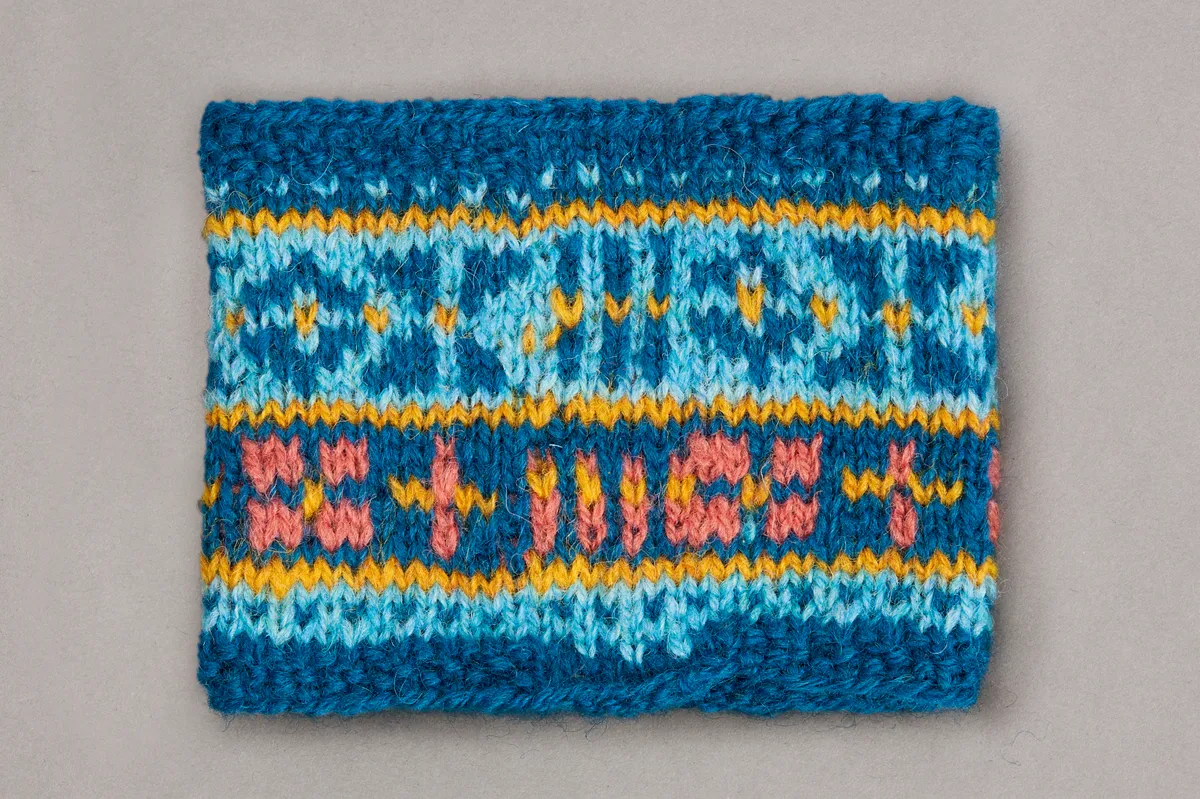
Once the cardigan steeks are set up, you’ll knit in the round to the armholes, where stitches for the armhole opening are either cast off or placed on a holder and armhole steek stitches are cast on. In my patterns, the decreases for both armholes are worked on the same round, which gives consistency, and are worked two stitches in from the steek marker. The number of stitches within the steek remains constant throughout, so it is useful to have stitch markers on either side of each steek.
You’ll continue knitting in the round until the shaping for the neck opening, before placing neck stitch(es) on a holder and casting on the neck steek stitches, which will be the same number as for the armhole. Both side shapings of the neckline are worked on the same round, again for consistency and two stitches in from the steek marker.
Once finished, these stitches will create a neck facing and will enable a neck rib/trim to be added, but remember when folding and stitching it in that you’ll need to leave room to get your head in!
The benefit of knitting in the round for multi-coloured stranded garments means that the right side is always facing the knitter, which makes following a chart easier. It helps to achieve an even tension, which doesn’t always happen when knitting and purling in rows. In addition, it avoids the difference in tension that can occur if the body is worked in the round and the upper front and back are worked separately in rows.
Cutting the piece of knitting you have spent hours working on is understandably daunting! However, careful consideration and the proper preparation will ensure a successful outcome. For best results consider the following:
- Use wool, preferably 100% wool. Other fibres may not have the ‘sticky’ quality of wool, and may unravel if cut, even after reinforcing. Shetland wool and other 100% wool 4ply yarns are the ideal options. Silk, acrylic and cotton yarns will unravel, so are not a wise choice for cutting.
- Steeks create a facing which provides a neat finish to hide all those yarn ends. Bear in mind though that steek facings can create bulk around necks and armholes.
- Always read through the pattern instructions to gain an understanding of the processes involved. Make sure you have the correct materials (yarn, needles, stitch markers, sharp scissors and anything else mentioned in the pattern).
Reinforcing the steek
There are several ways to reinforce and finish steeks. This Masterclass will use a pattern for a small mug hug to demonstrate the crochet method. Alternative steek techniques are also given, though, so have a read through and decide which ones you would like to try.
Note that the needle and crochet hook sizes given in this section refer to the Jamieson & Smith 2ply Jumper Weight yarn used for the mug hug pattern.
